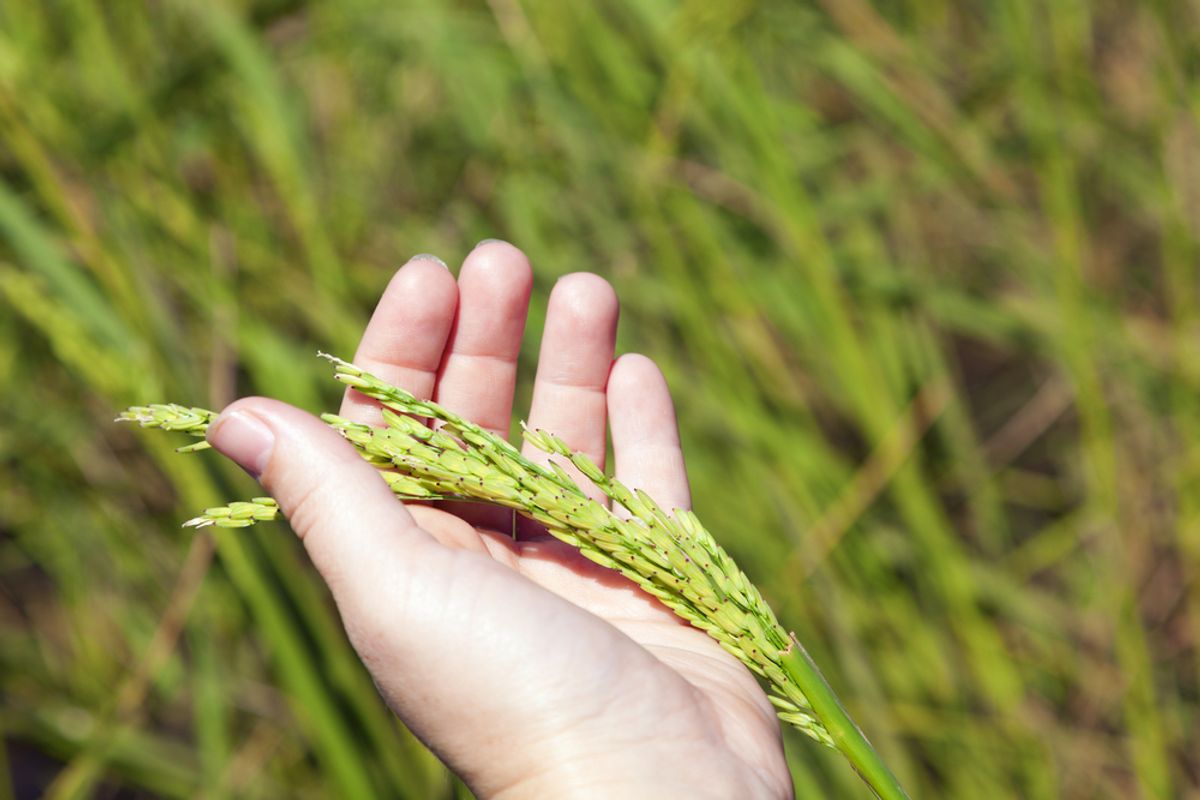April 2014 marked the first time in human history that the level of carbon dioxide in the atmosphere both surpassed 400 parts per million and managed to stay up there for an entire month. We know well enough by now that the continued rise of this greenhouse gas, caused by human emissions, has dire consequences for climate change. And apparently, it's also wreaking havoc on the quality of our food.
Researchers at Harvard University identified a direct link between high CO2 levels and significantly reduced levels of zinc and iron in four staple crops: wheat, rice, maize and soybeans. Just to be sure we're clear: "From a health viewpoint, iron and zinc are hugely important," said Samuel Myers, the study's lead author, adding that 2 million people, globally, already suffer from zinc and iron deficiencies. "Fundamentally the concern is that there is already an enormous public health problem and rising CO2 in the atmosphere will exacerbate that problem further," he said.
The Guardian has more on the stdy:
The research, published in the journal Nature, represents a major advance in the understanding of how rising CO2 levels affect food nutrition. The scientists compared nutrient levels in field crops grown in ambient CO2 levels, about 380-390 parts per milliion (ppm) at the time of the work, with those grown in the elevated CO2 levels expected by 2050. The latter level, 545-585ppm, is expected even if substantial curbs on emissions are put in place by the world's governments. In order to take account of variable growing conditions, the researchers analysed 41 different strains grown in seven locations on three different continents.
Wheat grown in high CO2 levels had 9% less zinc and 5% less iron, as well as 6% less protein, while rice had 3% less iron, 5% less iron and 8% less protein. Maize saw similar falls while soybeans lost similar levels of zinc and iron but, being a legume not a grass, did not see lower protein.
The precise biological mechanism that causes nutrient levels to fall is not well understood as yet. But Professor Brian Thomas, a plant develoment expert at the University of Warwick and not involved in the research said: "The work is convincing and consistent with what we do know about the plant physiology."
...Myers said simply eating more staple foods to meet zinc and iron requirements was not realistic when food production already must double by 2050 to meet the demand of rising populations. Some of the varieties used in the research performed better than others, raising the prospect of breeding strains that are less vulnerable to rising CO2. But the researchers noted: "Such breeding programmes will not be a panacea for many reasons including the affordability of improved seeds and the numerous criteria used by farmers in making planting decisions that include taste, tradition, marketability, growing requirements and yield."
Of course, we already knew that CO2 was bad news for the global food system, because climate change is bad news for the global food system. The National Climate Assessment, released Tuesday by the federal government, contained this key message:
Some areas are already experiencing climate-related disruptions, particularly due to extreme weather events. While some U.S. regions and some types of agricultural production will be relatively resilient to climate change over the next 25 years or so, others will increasingly suffer from stresses due to extreme heat, drought, disease, and heavy downpours. From mid-century on, climate change is projected to have more negative impacts on crops and livestock across the country – a trend that could diminish the security of our food supply.



Shares